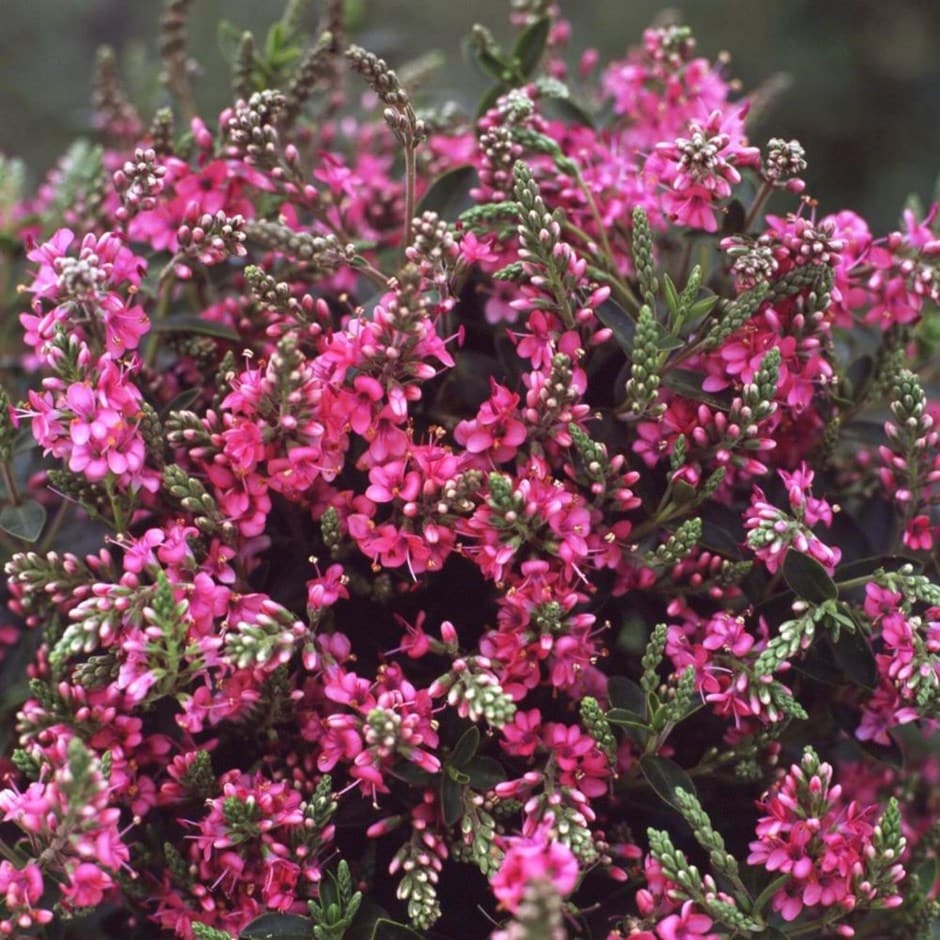Veronica 'Rosie'
hebe Rosie
- 2 litre pot
- £19.99
- available to order from summer
Delivery options
- Standard £5.99
- Position: full sun or partial shade
- Soil: moderately fertile, moist but well drained soil
- Flowering period: June to July
- Hardiness: frost hardy (may need winter protection)
A compact, bushy, evergreen shrub with lance-shaped, dark green leaves and short, dense clusters of bright pink flowers that fade with age. Veronica 'Rosie' has a somewhat sub-tropical exuberance displayed by the protruding stamens and long rounded petals throughout mid-summer.
This hebe makes a great addition to a patio pot, or try mixing it in the border alongside brightly coloured companions in a sheltered border. Penstemon, Nepeta and and cranesbill Geranium will all make terrific planting companions.
This hebe makes a great addition to a patio pot, or try mixing it in the border alongside brightly coloured companions in a sheltered border. Penstemon, Nepeta and and cranesbill Geranium will all make terrific planting companions.
Plant in well-drained soil with added well-rotted compost to improve fertility and structure. Incorporating mycorrhizal fungi at planting helps establish strong root growth.
Choose a sunny or partially shaded spot in a sheltered position, as hebes prefer warm, protected locations. Water regularly until established, then they become more drought-tolerant and require minimal care except in very dry summers where additional irrigation will support leaf and flower development.
Pruning is usually unnecessary, but you can remove misplaced or frost-damaged branches in late spring to maintain shape and encourage fresh growth. Avoid hard pruning into old wood, as hebes may not regrow from bare stems. Apply a balanced fertiliser in spring to promote flowering and overall health.
In colder regions, mulch around the base in autumn to offer some winter protection. Protect the foliage with horticutural fleece if severe or prolonged frost is forecast.
Choose a sunny or partially shaded spot in a sheltered position, as hebes prefer warm, protected locations. Water regularly until established, then they become more drought-tolerant and require minimal care except in very dry summers where additional irrigation will support leaf and flower development.
Pruning is usually unnecessary, but you can remove misplaced or frost-damaged branches in late spring to maintain shape and encourage fresh growth. Avoid hard pruning into old wood, as hebes may not regrow from bare stems. Apply a balanced fertiliser in spring to promote flowering and overall health.
In colder regions, mulch around the base in autumn to offer some winter protection. Protect the foliage with horticutural fleece if severe or prolonged frost is forecast.
